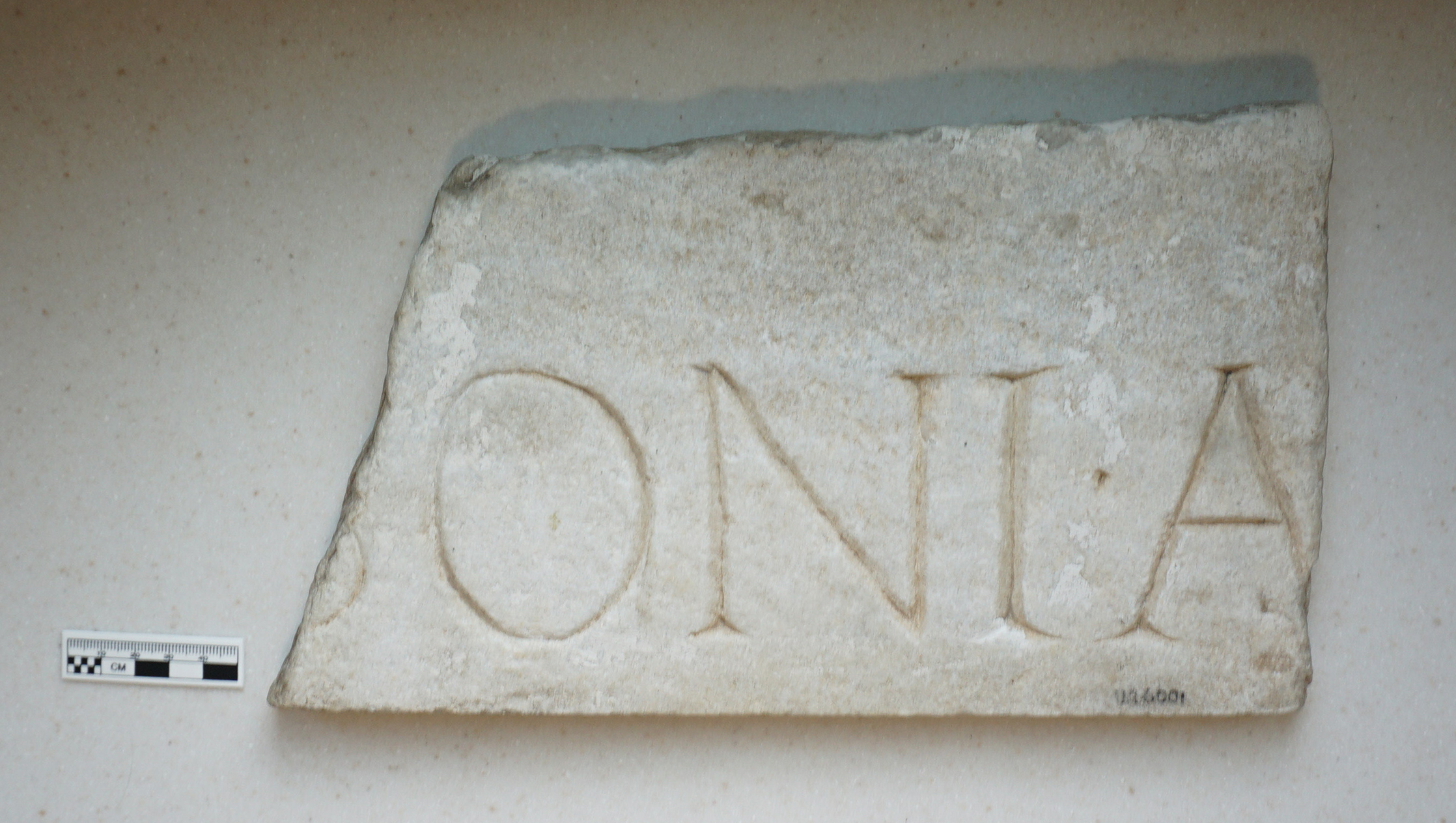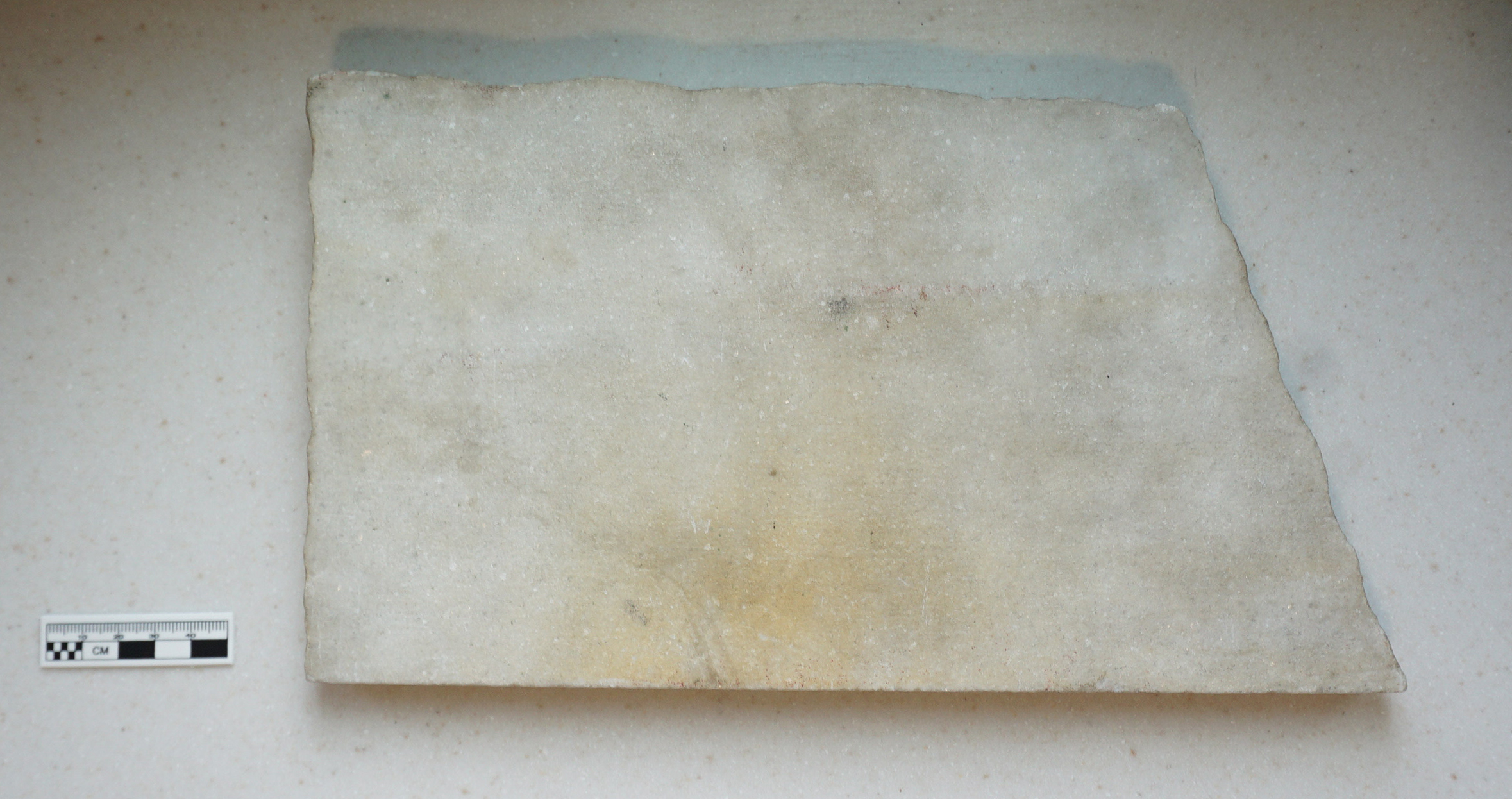For a 3D model made by the Virtual Curation Lab at Virginia Commonwealth University, see https://skfb.ly/o8rNs
AWG1877.01.01 (UR6001)
Roman, Roman period - Roman Imperial (Late 1st - 2nd century CE)
Material: Marble
Technique: Background shows traces of claw-chiseling; letters are incised
Weight: 2530g
Dimensions: 16.4cm high, 28.9cm long, 1.7cm wide
Condition: Fair condition, the top and side edges and fragmented while the back and bottom are very smoothly finished; traces of white plaster cover the front surface and the back in some areas
Provenance: Said to be from the Catacomb of Pontian/Catacomba di Ponziano, Rome
Source/donor: Gift of J.B. Jeter to the museum of Richmond College
Date of acquisition: 1877
Other notes: Acquisition date is via Richmond College Museum inventory list compiled by Gore: “marble from the oldest catacomb”
Research by: William Hunt, ‘23
Detailed description of form/shape:
Rough side and top edges with a very smoothly worked back and flat bottom. The back side is also slightly ridged, and the old inventory number is found below the inscription on the face. The plaster and finely finished back surface indicate that it was reused.
From left to right, the inscription reads “ONI A,” in “square capital” style letters that are evenly spaced. There is a circular mark indicating a word break between the letters “I” and “A.” The letters “N”, “I”, and “A” have notches (serifs) on their ends. On the left side of the inscription is a small portion of a letter preceding the “O”, that could possibly be an “S, B, or G”. The thickness of the letters (particularly the “O”) is somewhat variable.
Comparanda:
The serif-style capital letters and word breaks (interpuncts) are typical of Roman funerary inscriptions of the first to third century CE, such as Metropolitan Museum of Art X.248.1. The even spacing of the “square capital” style letters and the variable thickness of the line forming the ‘O,’ however, are characteristic of monumental Roman inscriptions in the late first or second century CE (Edmondson).
Discussion:
This inscription reportedly came from the Catacomb of Pontian in Rome, which was discovered in 1618 and was subject to looting until being explored again in 1883. The lettering style, however, looks earlier than the era of the catacombs, and the evidence for reuse suggests that its original context was elsewhere. The word ending “-oni” could be a third-declension dative singular ending, perhaps the end of a name in a dedicatory inscription.
Bibliography:
Edmondson, Jonathan. "Inscribing Roman Texts," in The Oxford Handbook of Roman Epigraphy, edited by Chester Bruun and Jonathan Edmondson, 111-130. Oxford: Oxford University Press, 2014.
Gordon, Arthur E. Illustrated Introduction to Latin Epigraphy. Berkeley: University of California Press, 1983.
The Met. Marble plaque with funerary inscription. https://www.metmuseum.org/art/collection/search/256771


